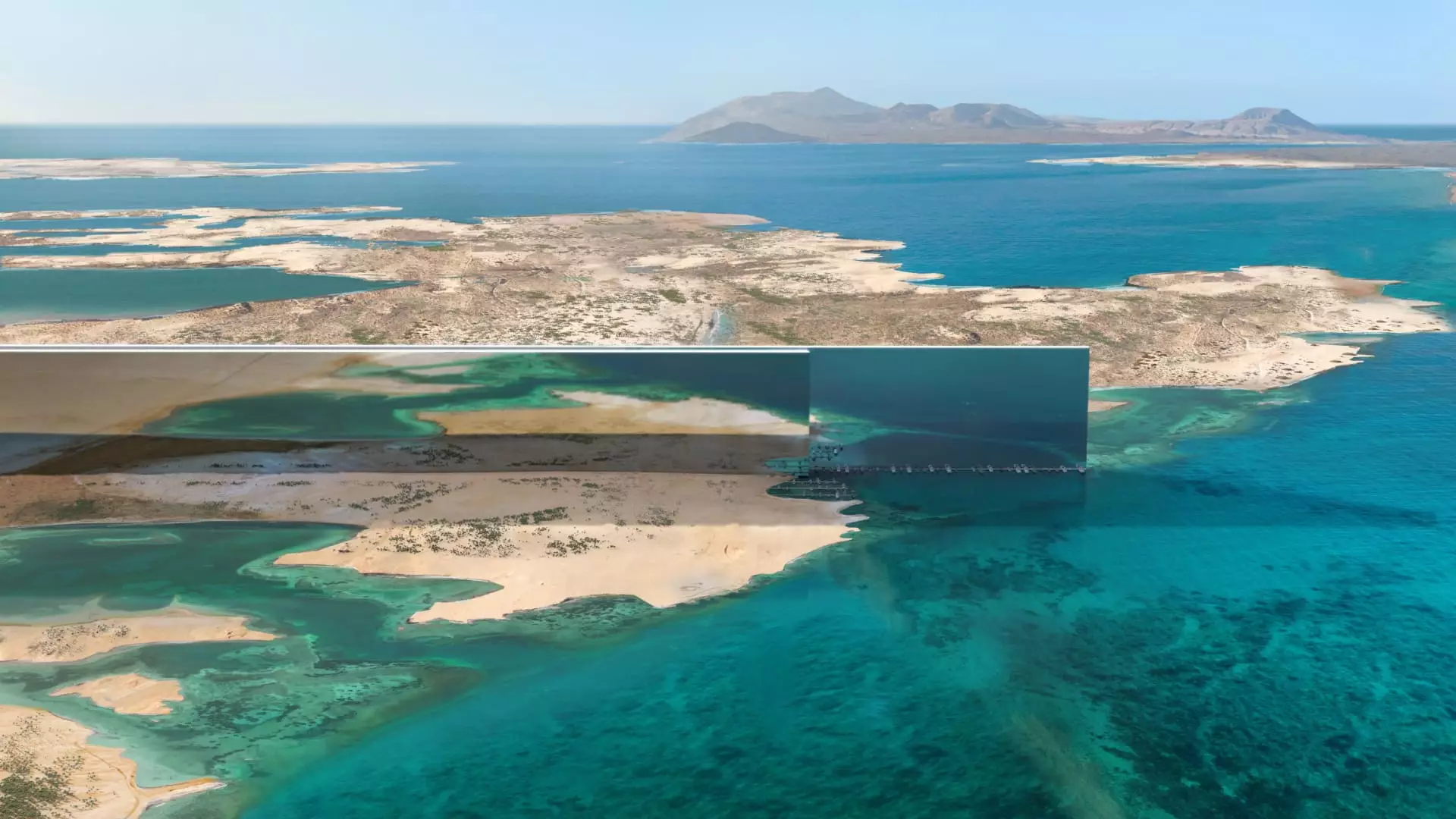Saudi Arabia’s ambitious plan to create a hyper-modern, futuristic city in the desert, epitomized by the colossal Neom project and its flagship The Line, presents itself as a bold leap into the future. The vision promises a utopian cityscapes connected by high-speed rail, zero-carbon footprints, and cutting-edge technology intended to rewritten the paradigms of urban living. Yet beneath this gleaming veneer lies a harsh reality: the project might be nothing more than a spectacular illusion, driven more by national pride and geopolitical aspirations than pragmatic necessity. When you peel back the layers of technological grandeur and economic optimism, what remains is a daunting question: Is this all sustainable?
Rather than being an unstoppable technological marvel, The Line risks becoming a monument to unchecked ambition, one that is increasingly vulnerable to economic turbulence and public skepticism. The recent reassessment by the Saudi Sovereign Wealth Fund signifies a moment of harsh introspection—perhaps the first crack in what was once touted as an unassailable vision. Such strategic reviews aren’t inherently sinister; they’re a vital reality check. Yet, in the context of a project of this magnitude, they reveal deeper issues of overreach and unrealistic projections that threaten its very existence.
The Cost of Overconfidence in a Volatile World
The figures involved are staggering: $500 billion allocated to a 105-mile linear city, with projections climbing up to $1.5 trillion for all of Neom. These numbers are enough to make any rational observer question the feasibility, especially when considering the economic shifts of recent years. Falling oil prices have eroded the financial cushion that initially justified Saudi Arabia’s grand venture, exposing the true vulnerability of funding such a mammoth undertaking during times of fiscal uncertainty.
What complicates matters further is the concern over the project’s technological backbone and economic sustainability. The ambitious plans hinge on breakthroughs in construction technology, innovative urban management, and high-tech infrastructure—none of which are guaranteed to succeed at the scale demanded. Investment in these areas resembles throwing dice in hopes of future gains, but the reality is that technological progress often stalls or diverges from expectant horizons. To rely solely on optimistic forecasts and superbly crafted visuals, as some consultants allegedly did, is a perilous gamble. This risk-benefit imbalance becomes even more pronounced in a shifting global energy market, where reliance on oil revenue is increasingly impractical.
Manipulation, Mismanagement, and the Fragility of Trust
A troubling undercurrent runs through the narrative of Neom and The Line: the danger of a “yes-man” culture among project advisors. Over the years, there has been growing criticism about overly optimistic forecasts that may have been pushed to secure approval or maintain funding. If project leaders are fed a constant diet of unchallenged optimism, the risk of misjudging market realities becomes magnified.
Trust is the cornerstone of any large-scale development, especially one that seeks to reshape entire urban ecosystems. Trust that the technology will deliver, that the finances will hold, and that the project remains aligned with genuine economic needs. If confidence falters, so too does the willingness of international investors, future residents, and local stakeholders to buy into the vision. The recent layoffs and strategic re-evaluations indicate that leaders are finally recognizing the importance of making financially responsible choices. But these moves also highlight a painful truth: the project’s initial élan was perhaps built more on spectacle than sustainability.
The Center-Left Perspective: A Necessary Reality Check
From a center-wing liberal standpoint, it’s tempting to celebrate innovation and ambitious development, especially for a nation traditionally reliant on oil revenues. However, true progress calls for a balanced perspective—one that recognizes the importance of planning, sustainability, and social cohesion. Saudi Arabia’s focus on hyper-urbanism and technological grandeur must be tempered with pragmatic long-term visions that include environmental preservation, economic diversification, and social inclusivity.
The risks inherent in Neom reveal a broader lesson: grandiosity without accountability, realism, and transparency ultimately undermines credibility. For Saudi Arabia to genuinely move toward a more sustainable and diverse future, it must distance itself from the culture of overpromising and embrace a more measured, community-centered approach. The country’s leadership needs to internalize that true innovation is rooted in thoughtful planning, not just futuristic aesthetics.
By re-evaluating its grand plans and focusing on realistic, scalable projects, Saudi Arabia can avoid the perilous trap of chasing illusions of progress. The blueprint for Saudi’s future shouldn’t be a shiny city of dreams but a resilient, inclusive society built on honesty with itself and the global community. The danger lies in continuing to craft a narrative that prioritizes spectacle over substance; only through honest reassessment and humility can the kingdom hope to forge a legacy that stands the test of time.

